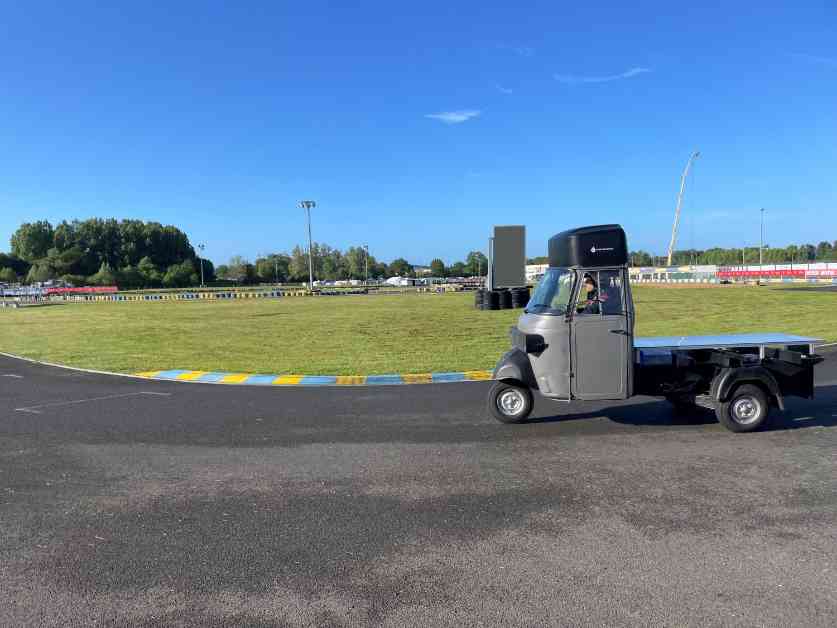Systemics, a French start-up, faced a significant technical and human challenge during the 24 Hours of Le Mans week. Just hours before the start of the race, they successfully completed a unique experiment: driving for 24 hours on the Alain Prost karting circuit with just 2 kilograms of hydrogen, using a rather unusual vehicle, a tuk-tuk.
The adventure began on Sunday, June 9th, and ended with joy and pride on Saturday, June 15th at 9 am, just a few hours before the start of the 24 Hours of Le Mans. The hydrogen tuk-tuk, designed by Systemics, ran for 24 hours with 2 kilograms of hydrogen, covering over 700 kilometers – to be precise, 708 km. This demonstrates that hydrogen-powered sustainable mobility is achievable! This was the desired proof by Antoine Abou, the pilot and CEO. To successfully complete this 24-hour journey in two phases (twelve hours each), he was supported by firefighters from SDIS 72, ENSOSP, engineers from Alpine and Toyota, as well as Pierre Fillon, Frédéric Lequien, and Nicolas Le Man.
For more information about this hydrogen tuk-tuk and its team, visit the hydrogen village starting this Saturday from noon onwards.
This achievement marks a significant milestone in the development of hydrogen-powered vehicles and their potential in sustainable mobility. As the world shifts towards cleaner energy sources and environmentally friendly transportation options, the successful completion of a 24-hour journey on hydrogen fuel is a promising step forward.
Hydrogen fuel is known for its efficiency and zero-emission properties, making it a popular choice for companies and individuals looking to reduce their carbon footprint. The use of hydrogen in vehicles like tuk-tuks opens up new possibilities for eco-friendly transportation solutions in urban areas, where reducing pollution and congestion is a top priority.
The collaboration between Systemics and various partners, including firefighters and industry experts, highlights the importance of teamwork and innovation in pushing the boundaries of technology and sustainability. By showcasing the capabilities of hydrogen-powered vehicles in endurance events like the 24 Hours of Le Mans, Systemics has set a new standard for autonomy and performance in the field of sustainable mobility.
As interest in hydrogen fuel continues to grow, initiatives like the hydrogen tuk-tuk project serve as a testament to the potential of this clean energy source in transforming the way we travel. With further research and development, hydrogen-powered vehicles could soon become a common sight on roads around the world, offering a greener and more efficient alternative to traditional gasoline-powered cars.
Overall, the success of the hydrogen tuk-tuk at the 24 Hours of Le Mans marks a significant achievement for Systemics and a promising development for the future of sustainable transportation. It demonstrates the viability of hydrogen fuel in powering vehicles for long durations, paving the way for a cleaner and more environmentally friendly automotive industry.

